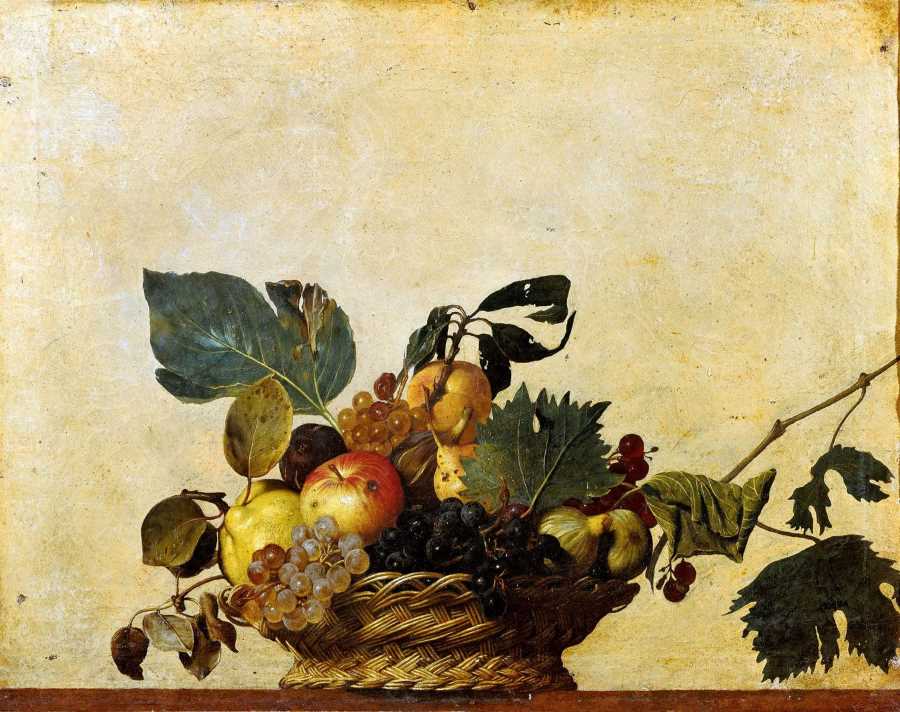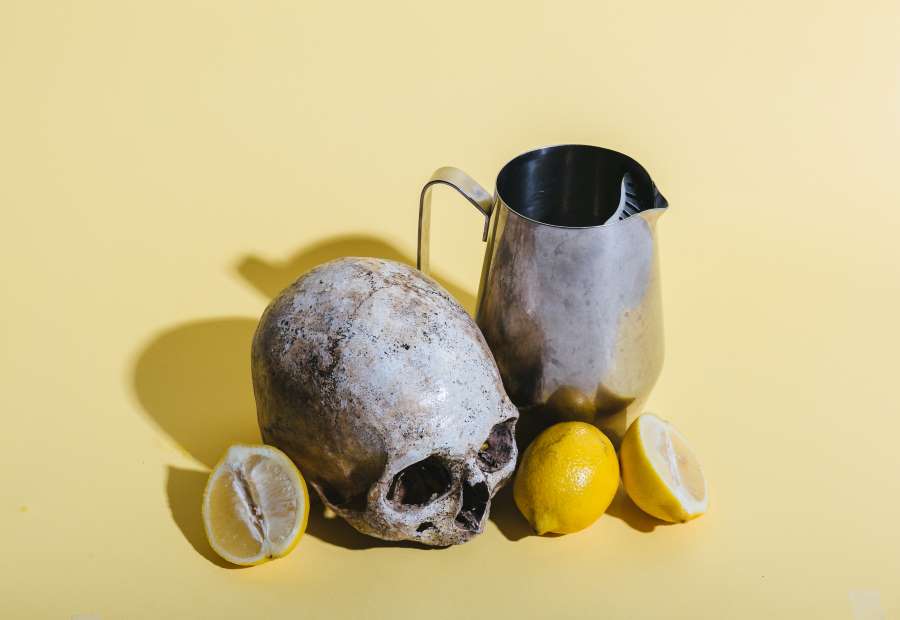The Quest for Immortality
In 1599 Caravaggio painted his Basket of Fruit, a wicker box full of colored summer fruits. If the artist’s intention was merely to depict the beauty of these fruits, this would not be one the most famous still life paintings of all time. Caravaggio’s fruits still surprise us with their truthfulness, aesthetic power, realism. However, there is a quid in their representation that remains unclear and elusive, which goes beyond the limits of its frame, and is what makes this composition so mysterious and fascinating. It is something that brings to mind the concepts of life and death, in their natural simplicity. Caravaggio’s figs and grapes, if observed more closely, are not perfect shapes – some of them are rotten, others spotty or over-ripe, they are deteriorating. This is not just analytical virtuosity, the fruits symbolically represent something that was alive but doomed to perish. Caravaggio’s Basket of Fruit is subject to the passage of time, but it seeks a way to make itself eternal, like all of us.
The theme of the transience of things, of the ephemeral nature of life, has inspired and tormented artists throughout the ages. Mostly, because artists felt they had decisive power in this millenary battle between life and death. In Western culture, art has always been conceived as the noblest tool for achieving immortality. If life is short, art is perceived as a long-lasting, durable medium. Due to its intrinsic nature, it has always been placed in the philosophical framework of eternity.

The search for immortality and the challenge against the decay of the human body is just one of the many aspects that brings together art and science. Often experienced as antithetical disciplines, art and science respond to this same urgency. They both experience the fear of losing life, control, beauty, and they both seek solutions to prevent it. They tell stories about the cycle of nature and also about all the human efforts to interpret it. However, artists throughout the ages had different relationships with the concepts of mortality and immortality, depending on the cultural context they were immersed in, on historical, value, and environmental factors.
In this series, we will try to analyze how artists chronologically responded to the fears of their era through the power of art; from cathedrals that challenge the limit of the sky, portraits that make a loved one last forever, hourglasses painted in a corner that remind us of the inexorable passing of time, to present day art, where the topos of the immortality of the soul is increasingly focused on the immortality of the body. Western history emphasized the capability of art to eternalize the mind and the spirit, whereas contemporary art, inspired by the latest scientific discoveries, raises questions about the guarantee of a future life, the biological decay of the body, the perishing of human existence. One thing is certain: art will never stop trying to fulfill mankind’s need for immortality, to respond to the fear humans have of being forgotten.
1. Greek Sculpture and the Eternity of Marble
Hellenistic sculpture is an explicit attempt to immortalize the human body through the ideal of beauty and perfection. Thus Greek statues are literally a perfect representation of a human being, made of marble, one of the most durable materials, so that a person can be eternally preserved and saved from the decay of the flesh.
2. Medieval Fear of Death and Middle-Age Parables
Plagues, death and pandemics were the first problems experienced by mankind in the Middle ages. The fear of this macabre presence in their life also left a mark on the art of that era. Medieval miniatures are full of parables about life and death; they imply a moral relationship with death and immortality. The Medieval man praises living life, the here and now.
3. The Renaissance and the Immortality of Portraiture
In the Renaissance, the focus was once more on human life and individuals, like it was in Classical times. We witness the flourishing of the genre of portraiture, mostly for commemorative purposes. The main purpose of a memorial portrait was to survive the soul of the beloved or illustrious protagonist. In this sense, Leonardo da Vinci’s portraits are special; they immortalize not only the aspect of his sitters, but also their attitude, psychological traits, escaping them from the aging process, and transforming the portrayed into an arche-type (like Mona Lisa).
4. Seventeenth Century Dutch still-life paintings and the Concept of Vanitas
Still-life is mostly associated with ephemerality and the immortality of nature. The most popular still-life paintings by Dutch artists physically represent the decay of living elements. Everything alluded to perishing, it became a symbol of the elapse of time.
5. Contemporary Perspectives and Dilemmas
Contemporary Art deals with the topic of immortality and decay of the body from different perspectives. Arte Povera, using ephemeral materials, questions the right of art to deteriorate and also creates dilemmas about preservation. Other artists (e.g Damien Hirst, Gino de Dominicis) specifically focus on the perishing of the body or on the idea of replacing damaged parts, to achieve immortality (e.g. Stelarc).

Aby Warburg (1902): The Art of Portraiture and the Florentine Bourgeoisie.
Zöllner, Frank (2005): “The “Motions of the Mind” in Renaissance Portraits: The Spiritual Dimension of Portraiture”, Zeitschrift für Kunstgeschichte, 68. Bd., H. 1, pp.23-40.
Brown, David Alan (1983): “Leonardo and the Idealized Portrait in Milan”, in Arte Lombarda, Nuova Serie, No. 67 (4), Atti del Convegno: Umanesimo problemi aperti 8, pp.102-116.
Delieuvin, Vincent (2015): “Les secrets de la Belle Ferronnière”, in Grande Galerie, le journal du Louvre, vol. 2, June-August, p. 74-75.
Fugelso, Karl (2010): “Music as Im(mortality) in Leonardo’s Portrait of a Man”, in Notes in the History of Art, Vol. 30, No. 1, pp.24-28.














